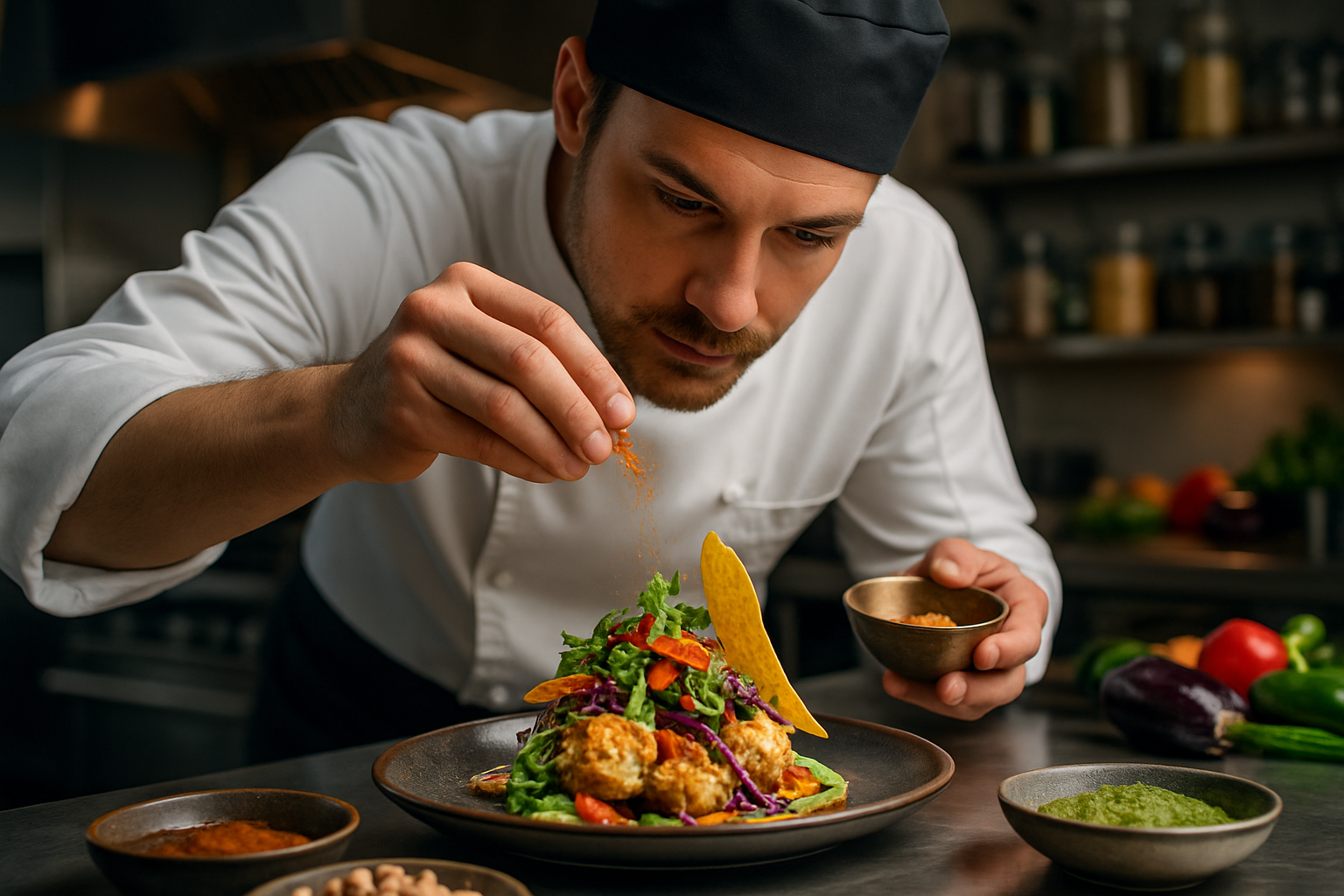Culinary Cinema: The Fusion of Food and Film
In a world where gastronomy and cinematography collide, a new genre is simmering to perfection. Culinary cinema, an emerging trend in the arts and entertainment industry, is tantalizing audiences with its unique blend of visual storytelling and epicurean delights. This innovative approach to filmmaking not only showcases the art of cooking but also explores the cultural, social, and emotional aspects of food, creating a multi-sensory experience that leaves viewers both satisfied and hungry for more.

From Screen to Plate: The Rise of Food-Centric Films
In recent years, there has been a surge in films that put food front and center. Movies like Julie & Julia, Chef, and Ratatouille have not only entertained audiences but also inspired them to explore the culinary world. These films go beyond mere visual appeal, delving into the passion, creativity, and dedication that drives chefs and food enthusiasts. They often intertwine personal narratives with culinary journeys, creating stories that resonate on both emotional and gastronomic levels.
The Recipe for Success: Cinematic Techniques in Culinary Films
Filmmakers employing culinary cinema techniques have developed a unique visual language to capture the essence of food on screen. Close-up shots of sizzling pans, slow-motion sequences of ingredients being prepared, and carefully choreographed cooking scenes all contribute to the genre’s distinctive style. Sound design plays a crucial role, with the crackling of spices and the gentle simmer of sauces adding an auditory dimension to the viewing experience.
Beyond Entertainment: The Cultural Impact of Culinary Cinema
Culinary cinema serves as more than just entertainment; it has become a powerful medium for cultural exchange and understanding. Films like Jiro Dreams of Sushi and The Hundred-Foot Journey use food as a lens through which to explore different cultures, traditions, and personal histories. These movies have the ability to bridge cultural gaps, fostering appreciation for diverse culinary traditions and the stories behind them.
The Future of Food on Film: Interactive and Immersive Experiences
As technology advances, the boundaries of culinary cinema continue to expand. Virtual reality and augmented reality are opening up new possibilities for immersive food-related experiences. Some filmmakers are experimenting with scent technology to add another sensory layer to their productions. Meanwhile, interactive screenings that pair films with themed meals are gaining popularity, allowing audiences to taste the dishes they see on screen.
Culinary Cinema’s Recipe for Success in the Streaming Era
The rise of streaming platforms has provided a new avenue for culinary cinema to flourish. Food-centric documentaries and series have found a dedicated audience on these platforms, with shows like Chef’s Table and Salt Fat Acid Heat garnering critical acclaim and cult followings. These long-form narratives allow for deeper exploration of culinary topics, from the intricacies of specific cuisines to the global impact of food systems.
Challenges and Criticisms: The Other Side of the Plate
Despite its growing popularity, culinary cinema faces its share of challenges and criticisms. Some argue that the genre can sometimes romanticize or oversimplify the culinary world, glossing over the harsh realities of professional kitchens. There’s also the risk of cultural appropriation when films attempt to represent cuisines and traditions outside of the filmmakers’ own experiences. Addressing these concerns will be crucial for the genre’s continued growth and credibility.
The Critics’ Menu: Reception and Analysis of Culinary Cinema
Film critics have been developing new frameworks to analyze and critique culinary cinema. Traditional elements of film analysis are now being combined with considerations specific to food representation. Critics look at how accurately cooking techniques are portrayed, the authenticity of cultural representations, and the effectiveness of food as a storytelling device. This evolving critical landscape is helping to shape and refine the genre.
From Niche to Mainstream: The Commercial Success of Food Films
The commercial success of culinary cinema has not gone unnoticed by major studios and producers. What was once a niche genre has now become a viable box office draw. Films like Pig and The Menu have demonstrated that culinary themes can be successfully integrated into various genres, from drama to thriller. This crossover appeal is expanding the audience for food-centric films and attracting high-profile talent to the genre.
As culinary cinema continues to evolve, it offers a rich feast for both film enthusiasts and food lovers. By combining the visual power of film with the universal language of food, this genre creates a unique space where stories can be told, cultures can be explored, and audiences can be transported through taste and sight. As we look to the future, it’s clear that culinary cinema will continue to serve up fresh and exciting content, pushing the boundaries of storytelling and cinematic experience. Whether through blockbuster films, streaming series, or interactive installations, the fusion of food and film promises to remain a compelling and innovative force in the arts and entertainment landscape.





